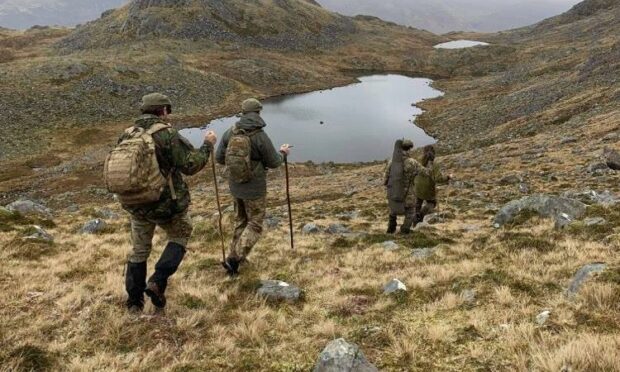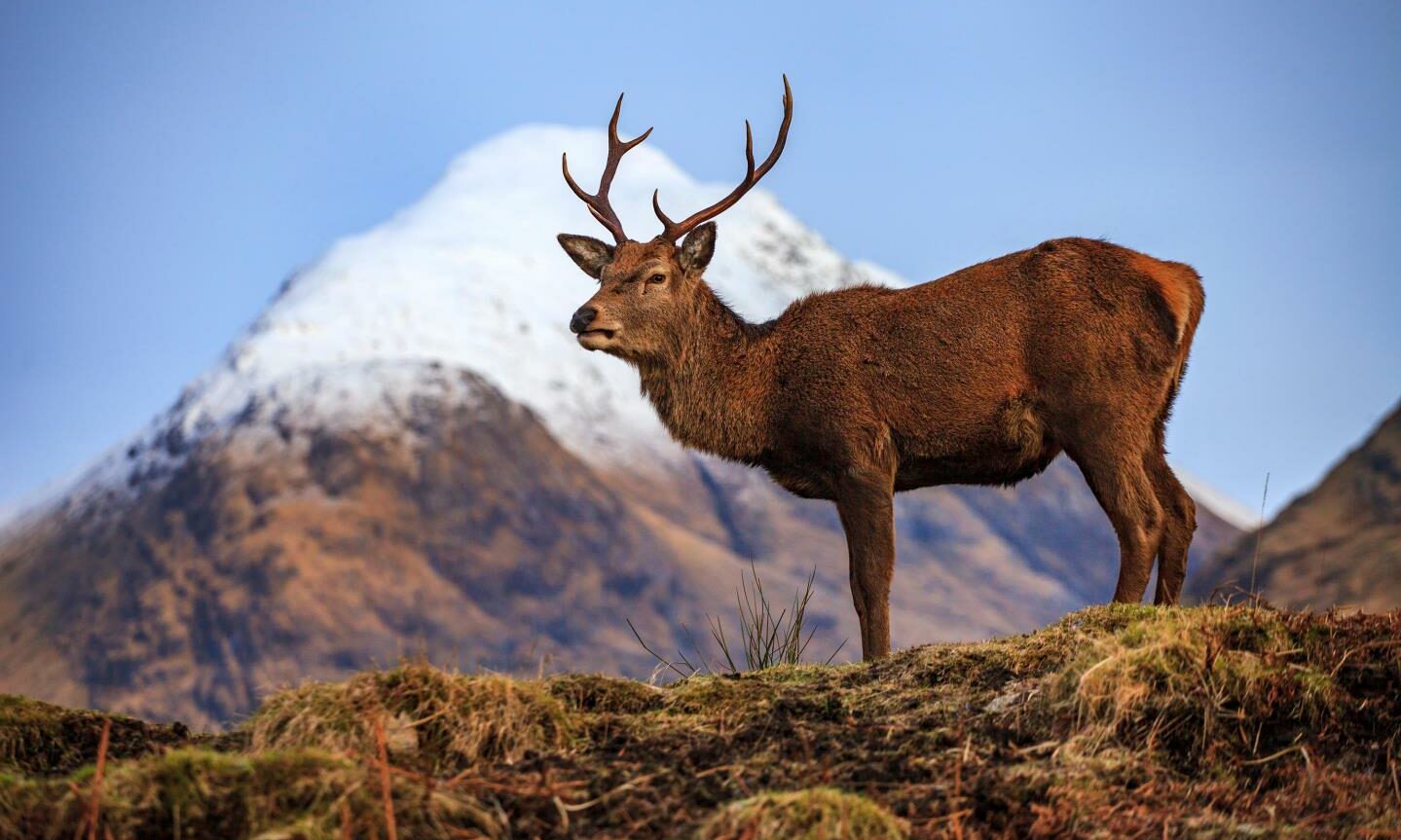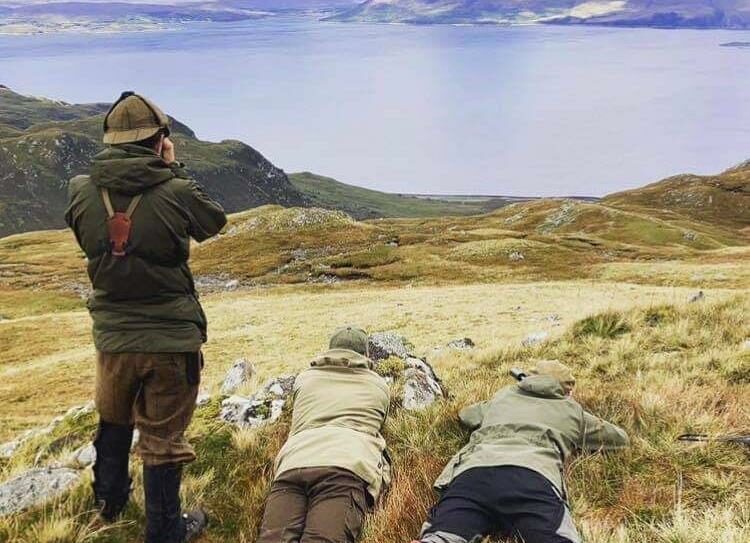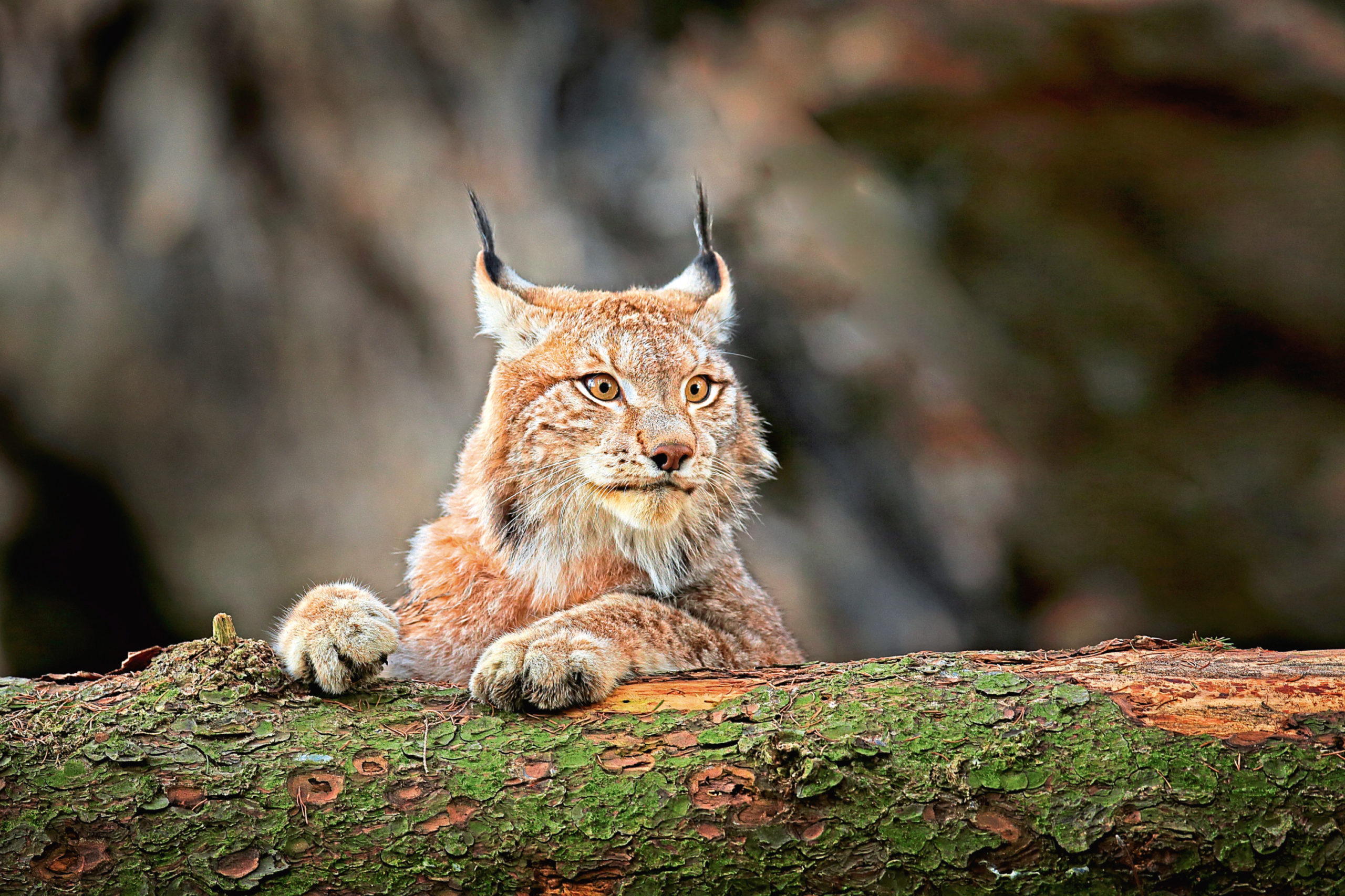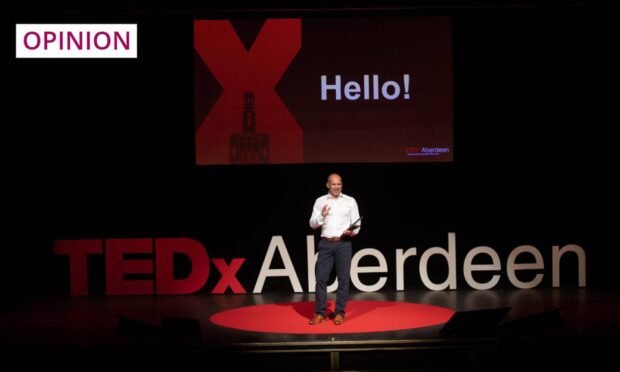Two ticks crawl across the back of my hand and, with a firm press of my thumb, I crush them.
The final resting place of the pests is a bracken and heather strewn incline which bleeds into Loch Nevis.
Lying on my front in oversized, borrowed camos atop a hellish beanbag of heath, I cautiously raise my chin and survey the loch. My eyes rest on Sgurr an Eilein Ghiubhais, a vertiginous fortress of mica schist, resembling a wodge of tin foil-wrapped birthday cake.
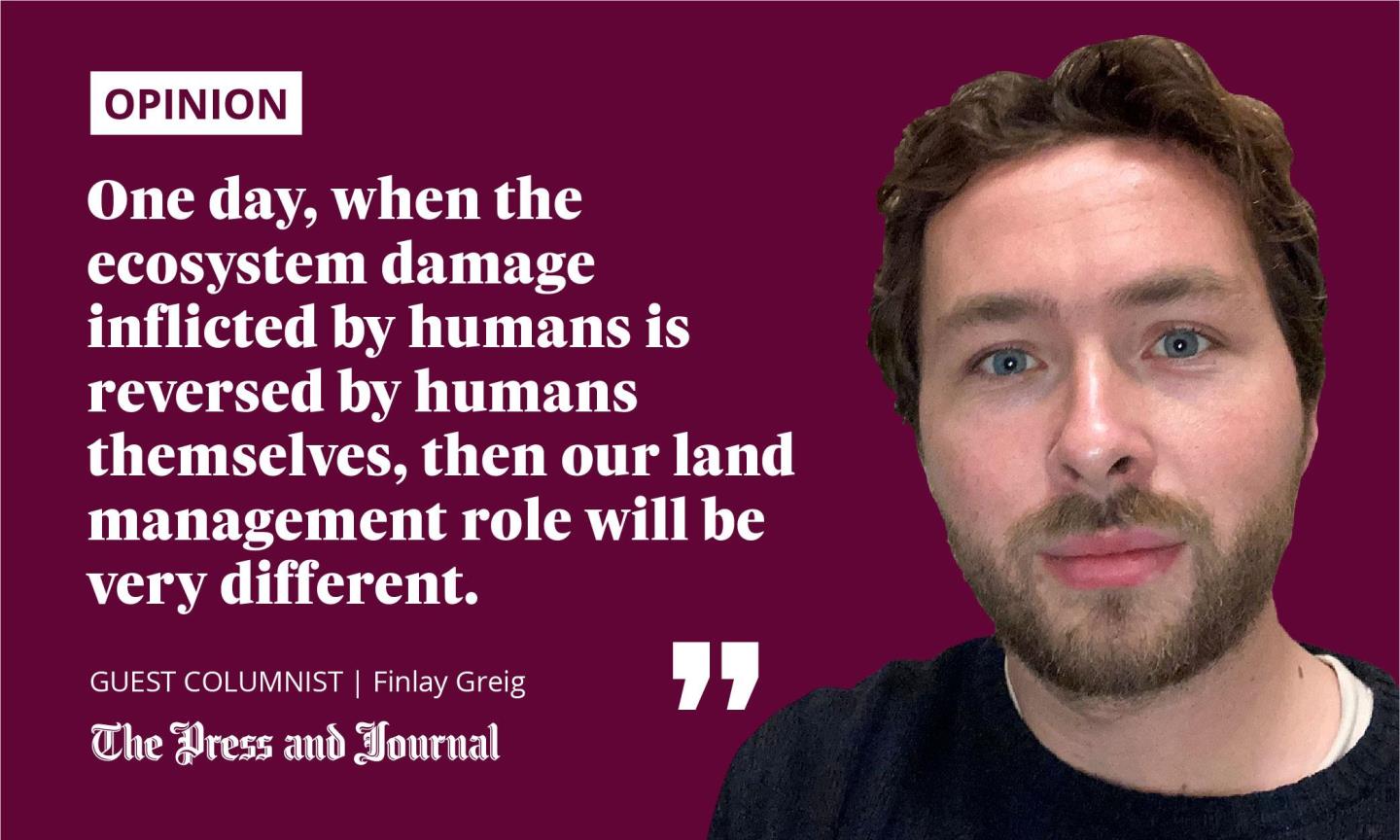
Knoydart Foundation head stalker Jim Brown, waits patiently at the top of a knoll 30 metres to my east with a loaded rifle. Our walkie-talkies crackle into life with the voice of ghillie Daniel “Woody” Woods.
“The beast is coming up the right valley.”
Even over the static, Woody’s raspy Geordie accent is unmistakable. Brown, a greying and rugged yet somehow youthful looking man of 47 shuffles behind the weapon and readies himself, placing his eye behind the scope.
“Hang on, he might be going up the left valley… No, he’s changed his mind again; he’s coming up the right.”
Brown briefly pulls away from his firearm to turn to me. He mouths: “Turn it f*****g down” and mimes tuning a radio. I comply and cringe.
My first hunt
This is my first day volunteering with the stalking team and, despite being a vegetarian, I don’t want to sabotage the kill. The stalker returns to his prone position and waits.
“He’s coming your way, boss.”
A red stag, rotund from life on the coast rather than the mountains, jumps into view and hurtles up the space which separates Jim and me.
A gunshot ripples through the valley and the animal jumps, carries on for a few steps before collapsing, its blood spilling across the rocks. My heart neither quickens nor slows but a sadness comes over me.
Deep in adrenaline-induced flight mode, the stag sprints across our line of sight. The window of opportunity to shoot is narrowing
“There’s another one, boss. This one’s coming up the left valley,” Woody informs us.
A second stag, leaner than his fallen neighbour, races into view. Brown, never pausing, resumes a shooting position and takes a steady breath.
Deep in adrenaline-induced flight mode, the stag sprints across our line of sight. His window of opportunity to shoot narrowing, Brown lets out a low-pitched impersonation of a bleat, startling the prey.
Then, with a gentle squeeze of the trigger, the second beast drops.
Trophy hunting repulses me – but animal management is different
Six years had passed since I had last eaten a chunk of meat – a Scotch pie at a football game, for anyone who’s asking – but, during a month of volunteering with the Knoydart Foundation, I felt compelled to join the deer management team.
Trophy hunting repulses me, as does cruelty to animals, but I reached the conclusion that – thanks to human-driven deforestation and the removal of apex predators – the blood being shed on Scotland’s hills is a necessary and urgent evil.
During my stay, Woods would insist: “I’m a tree protector!” Though typically said with tongue firmly lodged in cheek, the green-eared ghillie’s statement isn’t far from the truth.
The Knoydart stalking team work in tandem with the Knoydart Forest Trust, who are responsible for the management of woodland on the remote peninsula.
Grant Holroyd, forester for the trust and director of the foundation, argues that deer culling is essential if Scotland is to play its part in combatting the climate emergency.
“Anywhere there’s a wild deer population, you can’t plant trees without managing the deer,” he says.
Too many deer affects the climate
Since 1999, the Trust has planted over 600,000 trees, encouraging biodiversity, increasing carbon storage and laying the foundation for the re-establishment of rare and missing native species, such as the black grouse. It plans to accelerate its efforts in 2022 and plant a further 250,000 trees.
The leaves and shoots of trees could make up the majority of the red deer’s diet, and, with over-population, it wouldn’t take long to undo the hard work of the Knoydart Forest Trust.
Holroyd explains: “We’ve got a wild deer population that’s been growing and growing for a long time and, if it’s not controlled, it will reduce biodiversity and tree growth and the ability to store carbon.
“Reducing the deer population further actively leads to the absorption of carbon in trees and soil.”
Humans will eventually be more custodian than controller
Deer stalking – synonymous with tweed, the upper classes and exaggerated masculinity – is often rightly the target of ire from animal rights activists.
Brown, despite his job title of head stalker, agrees that the negative connotations are sometimes justified and that sport shooting can be detrimental to regeneration efforts.
“If the purpose of the deer stalking is sport, then it is contributing to the climate emergency due to high deer densities preventing habitat regeneration,” he says.
Brown and his team, however, practice a responsible brand of deer management that is, as the stalker puts it, “a necessary part of responding to the climate emergency” with every effort taken to “ensure culling is carried out humanely”.
Brown, like myself, however, believes that, one day, when the ecosystem damage inflicted by humans is reversed by humans themselves, then our land management role will be very different.
In the centuries to come, when newly regenerated native forests mature and predators such as lynx are inevitably reintroduced, the role of the deer stalker will become more custodian than controller.
Until then, their role as executioner remains imperative.
Finlay Greig is a Scottish journalist
